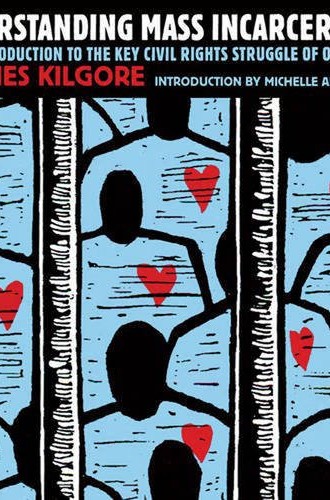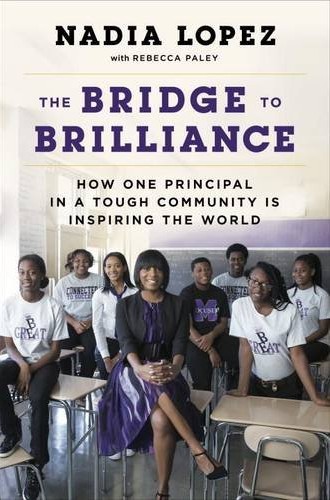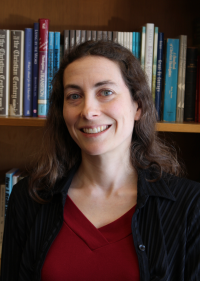From school to prison
For some kids, jail is a school field trip. For others, it's nearly inevitable.
As we drove through the neighborhood, my daughter pointed out the police station where her preschool class had gone for a field trip. I asked her what she had learned on the field trip. “We went into the jail!” she answered. My jaw dropped.
“What? You mean they actually put you in a jail cell?”
“Yeah, but don’t worry—they didn’t lock us in. We were just visiting.”
“What was it like? Did it have windows?”
“It was just a room. It didn’t have any windows. They let us get on the bed, but it wasn’t very bouncy.”
“Was there a toilet?”
“Yeah, a little one.”
“What did they tell you about the people who get put in the jail?”
“They’re bad people.”
I didn’t know how to respond. How do you explain to a five-year-old that there’s a machine called mass incarceration that targets people based on race and class, imprisoning them and then releasing them into a parallel universe where the civil rights accomplishments of the past half-century—the right to vote, access to fair housing, loans for education—no longer apply?
When this conversation happened I’d just read James Kilgore’s primer on mass incarceration. Kilgore uses data, theory, and storytelling to present the history and realities of incarceration in this country, particularly in relation to political shifts, economic incentives, and systemic racism.
The litany is overwhelming. Only two states allow people in prison to vote. The death penalty is disproportionately imposed when the perpetrator is black and the victim is white. In 2012 “there were more than 350,000 people with serious mental illness in prisons and jails—nearly ten times the number in state mental health facilities.” Pregnant women are frequently shackled while delivering their babies in prison. 47% of black transgender people have been incarcerated. Mandatory minimum sentencing, which was originally designed by liberals to avoid unfair racially-motivated parole board decisions, imposes exponentially harsher penalties for drugs commonly used in black and Latino communities. 58% of private prisons in the U.S. are owned by two mega-corporations whose CEOs earned a combined annual compensation of $7.8 million in 2013.
While my child can talk casually about touring a jail cell, there are millions of children whose relationship to incarceration is fraught and, in some cases, nearly inevitable. But Kilgore offers glimpses of hope. To block the school-to-prison pipeline, some public school administrators “have replaced zero tolerance with conflict resolution and peace-building processes” as modes of discipline. Community-based restorative justice and large-scale transformative justice efforts are growing. The latter seek to abolish the underlying systems that create communities in which justice has never existed (and, thus, cannot be restored).
Brooklyn school principal Nadia Lopez uses some of these same strategies to establish hope among her students in an underprivileged neighborhood. She’s blunt about how the system is stacked against young black men. “Vincent!” she says to a student who has just broken another student’s jaw. “Whenever you assault someone, you can go to jail. Because of this you could wind up in the system, which is where they want most young men of color. Amir wasn’t worth it. Your life wasn’t in danger. He disrespected you; I get it. But going to jail isn’t worth it.” To another student, who was seen hanging out with gang members, she says: “If you keep this up, you are going to be dead. There are too many young black men dying. I didn’t open up a school to fund funeral parlors or prisons.”
Lopez develops creative programs for her students (who she calls “scholars”) and teachers. She coordinates large-scale mentoring events and relationships. She takes the students on a field trip to Harvard. She walks her teachers through the neighborhood (Brownsville, which is known as the murder capital of New York) so they can feel the danger their students face every day. After having her sixth-graders read The Immortal Life of Henrietta Lacks, she takes them to meet the author.
Lopez’s memoir is realistic and unromantic. It reveals an imperfect person who struggles with boundaries (she works until 10 p.m., on weekends, and through the holidays). She describes her frustrations as an educator, her engagement with the local community, and her surprise when a student’s comments about her on the Humans of New York blog went viral: “She tells us that each time somebody fails out of school, a new jail cell gets built. And one time she made every student stand up, one at a time, and she told each one of us that we matter.”
There is wisdom in this twofold approach—telling the truth, and then helping students change that truth. Educators like Lopez are beginning to dismantle the structures that imprison, from the ground up. The structures are deeply embedded, so a lot of dismantling will be required.







